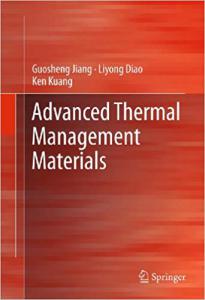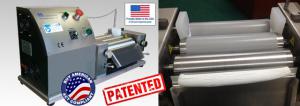Keeping “Cool" is a Big Deal for Your Electronics Gadgets
All electronic devices and circuitry generate excess heat because of the slight inefficiency of the electricity-conducting components inside. All of the metals used in everyday electronics, under normal operating conditions, have some resistance. When the current flows over the resistance, some of it becomes heat.
Heat has a negative effect on electronics and their circuitry. Solid state electronics (like the integrated circuit or computer chips) actually begin to break down and fry at temperatures much above 120 degrees Celsius. (248 degrees Fahrenheit) . The hotter the temperature – the less functional the machine will become.
Thus electronics require "keeping cool" to improve reliability and prevent premature failure.
A fancier term for "keeping cool" is called "thermal management", like you need to actively manage the temperature!
In most cases, the amount of heat output is equal to the power input, if there are no other energy interactions. There are several techniques for cooling including various styles of heat sinks, thermoelectric coolers, forced air systems and fans, heat pipes, and others.
Very often heat sinks are used in electronics and have become essential to modern microelectronics. In common use, it is a metal object brought into contact with an electronic component's hot surface—though in most cases, a thin thermal interface material mediates between the two surfaces. Microprocessors and power handling semiconductors are examples of electronics that need a heat sink to reduce their temperature through increased thermal mass and heat dissipation (primarily by conduction and convection and to a lesser extent by radiation). Heat sinks have become almost essential to modern integrated circuits like microprocessors, DSPs, GPUs, and more.
A heat sink usually consists of a metal structure with one or more flat surfaces to ensure good thermal contact with the components to be cooled, and an array of comb or fin like protrusions to increase the surface contact with the air, and thus the rate of heat dissipation.
There is also another class of heat sinks, that you cannot normally see. They are made out of typically composite materials like copper tungsten https://torreyhillstech.com/hswcu.html and copper molybdenum https://torreyhillstech.com/hsmocu.html. Without them the modern fighter jets cannot fly, cell phones cannot make calls.
Check out this book "Advanced Thermal Management Materials" https://torreyhillstech.com/introduction-to-thermal-management-in-microelectronics-packaging.html.
Advanced Thermal Management Materials provides a comprehensive and hands-on treatise on the importance of thermal packaging in high performance systems. These systems, ranging from active electronically-scanned radar arrays to web servers, require components that can dissipate heat efficiently. This requires materials capable of dissipating heat and maintaining compatibility with the packaging and dye. Coverage includes all aspects of thermal management materials, both traditional and non-traditional, with an emphasis on metal based materials. An in-depth discussion of properties and manufacturing processes, and current applications are provided. Also presented are a discussion of the importance of cost, performance and reliability issues when making implementation decisions, product life cycle developments, lessons learned and future directions.
This information is brought to you by Torrey Hills Technologies, LLC, San Diego, CA 92121. We export heat sinks, belt furnaces and three roll mills to 60+ countries.
ken kuang
Torrey Hills Tech, LLC
+1 858-558-6666
email us here
Visit us on social media:
Facebook
Twitter
LinkedIn
Introduction to Torrey Hills Technologies, LLC
Legal Disclaimer:
EIN Presswire provides this news content "as is" without warranty of any kind. We do not accept any responsibility or liability for the accuracy, content, images, videos, licenses, completeness, legality, or reliability of the information contained in this article. If you have any complaints or copyright issues related to this article, kindly contact the author above.



